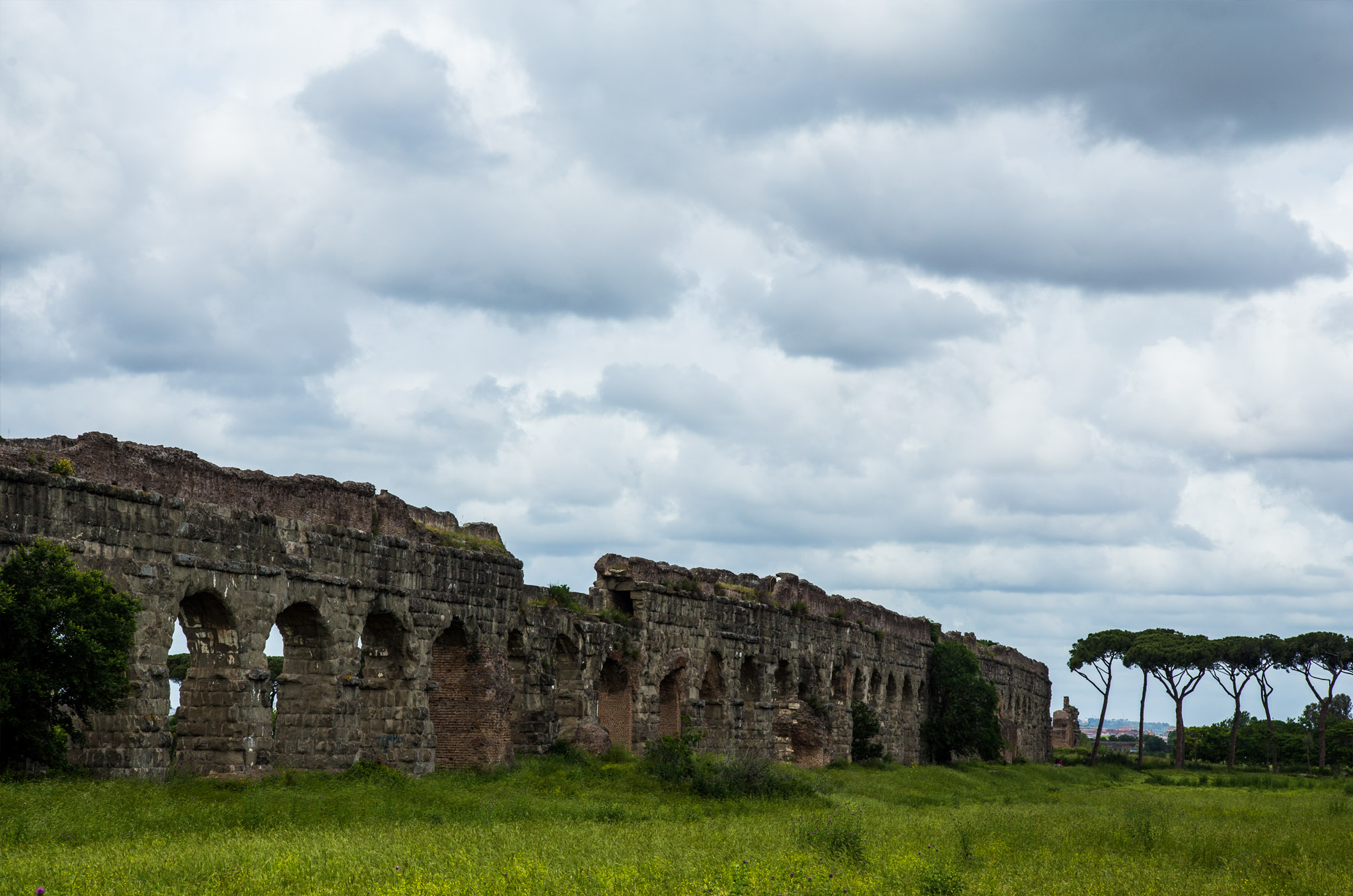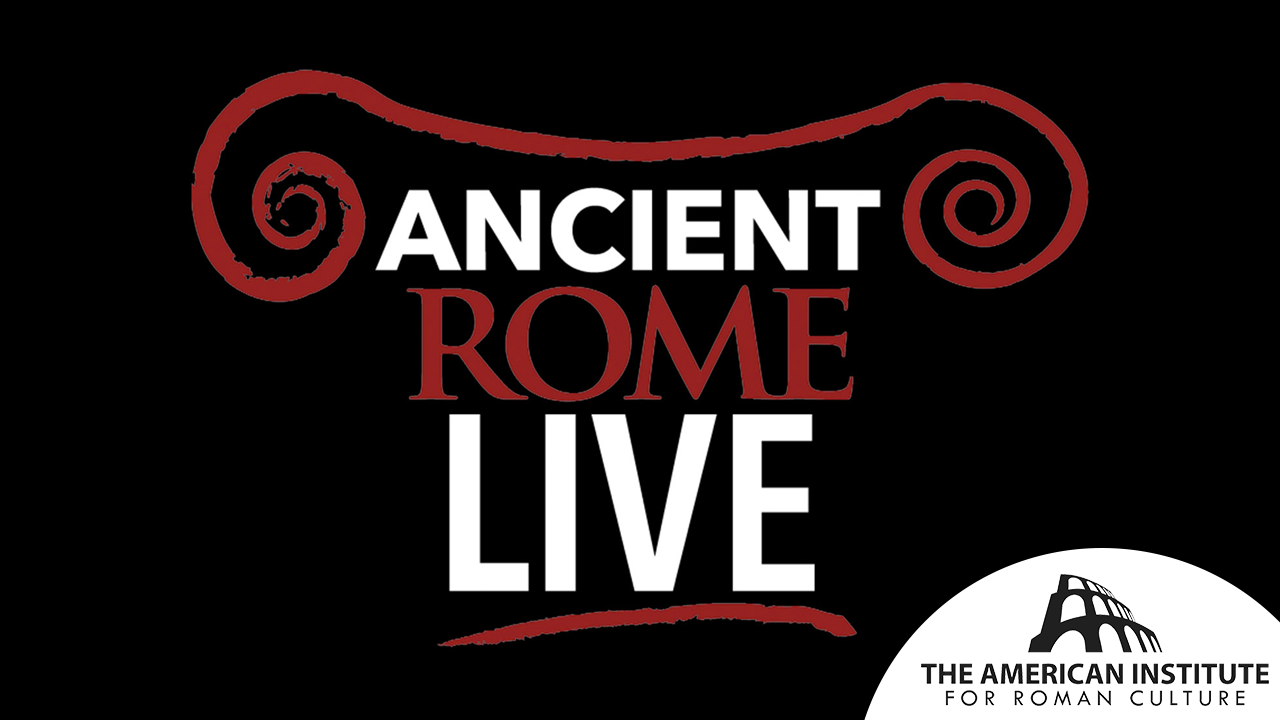Start with our video overview:
The aqueducts are impressive constructions demonstrating how the ancient Romans’ mastery of engineering. Ruins of various aqueducts can still be seen all around the city. Prior to their construction, there was no need for them as Rome was naturally blessed with many water sources, including springs and the Tiber River. As the city and population grew rapidly, harvesting water from more distant sources became necessary and aqueducts were constructed.
In short, the aqueducts served as conduits. Using the natural flow of gravity, they directed water streams originating from lakes, rivers, and springs from distant locations into the heart of the city. Four aqueducts were built during the Republic period. The oldest being the Aqua Appia, built in 312 BCE by Appius Claudius, as it was customary to name the project after the individual responsible for it. The Aqua Appia was16.5 kilometers in length, its course following a path similar to the modern Via Prenestina. A portion of the structure still stands in the area of Porta Maggiore.
In 272 BCE, the second aqueduct was constructed. The Aqua Anio Vetus was much longer, reaching nearly 63 kilometers and drawing water from the Anio River. Following the conquest of Carthage, the expansive Aqua Marcia was built in 144 BCE. Completing the aqueduct projects from the Republic, the Aqua Tepula was completed shortly after in 125 BCE after the conquest of Greece.
A century later, under the reign of Emperor Augustus, the existing aqueducts were expanded and modernized, and three additional aqueducts were constructed. The new projects were the Aqua Julia (33 BCE), the Aqua Virgo (19 BCE), and the Aqua Alsietina (2 BCE). The Aqua Virgo was particularly important as it supplied water to the Campus Martius, an area that Augustus was developing during the same period.
In 38 CE, Emperor Caligula began two new aqueducts that were later completed by his successor Claudius in 52 CE. They were the Aqua Anio Novus, the second branch drawing from the Anio River, and the Aqua Claudia. The monumental arcades of the Aqua Claudia are well preserved and can be seen stretching out for miles at the Parco degli Acquedotti.
To direct water to his baths constructed on the Esquiline hill, Emperor Trajan built the Aqua Traiana in 109 CE. With a similar idea, Emperor Caracalla completed the Aqua Antoniana in 213 CE to supply water to his own bath complex. The history of many of these aqueducts was written by the author and engineer Frontinus at the end of the 1st century CE. In his treatise, he studied the construction systems developed through time and described the recommended maintenance methods.
Bibliography
Butler, Howard Crosby. “The Roman Aqueducts as Monuments of Architecture.” American Journal of Archaeology 5, no. 2 (1901): 175–99.
https://doi.org/10.2307/496768.
Morgan, M. H. “Remarks on the Water Supply of Ancient Rome.” Transactions and Proceedings of the American Philological Association 33 (1902): 30–37. https://doi.org/10.2307/282585.
Romolo Augusto Staccioli, Acquedotti, fontane e terme di Roma antica, Roma, Newton & Compton, 2005.
This content is brought to you by The American Institute for Roman Culture, a 501(C)3 US Non-Profit Organization.
Please support our mission to aid learning and understanding of ancient Rome through free-to-access content by donating today.
Cite This Page
Cite this page as: Darius Arya, The American Institute for Roman Culture, “Aqueducts (History)” Ancient Rome Live. Last modified 10/02/2020. https://ancientromelive.org/aqueducts-history/
License
Created by The American Institute of Roman Culture, published on 10/02/2020 under the following license: Creative Commons: Attribution-NonCommercial-ShareAlike. This license lets others remix, tweak, and build upon this content non-commercially, as long as they credit the author and license their new creations under the identical terms. Please note that content linked from this page may have different licensing terms.




